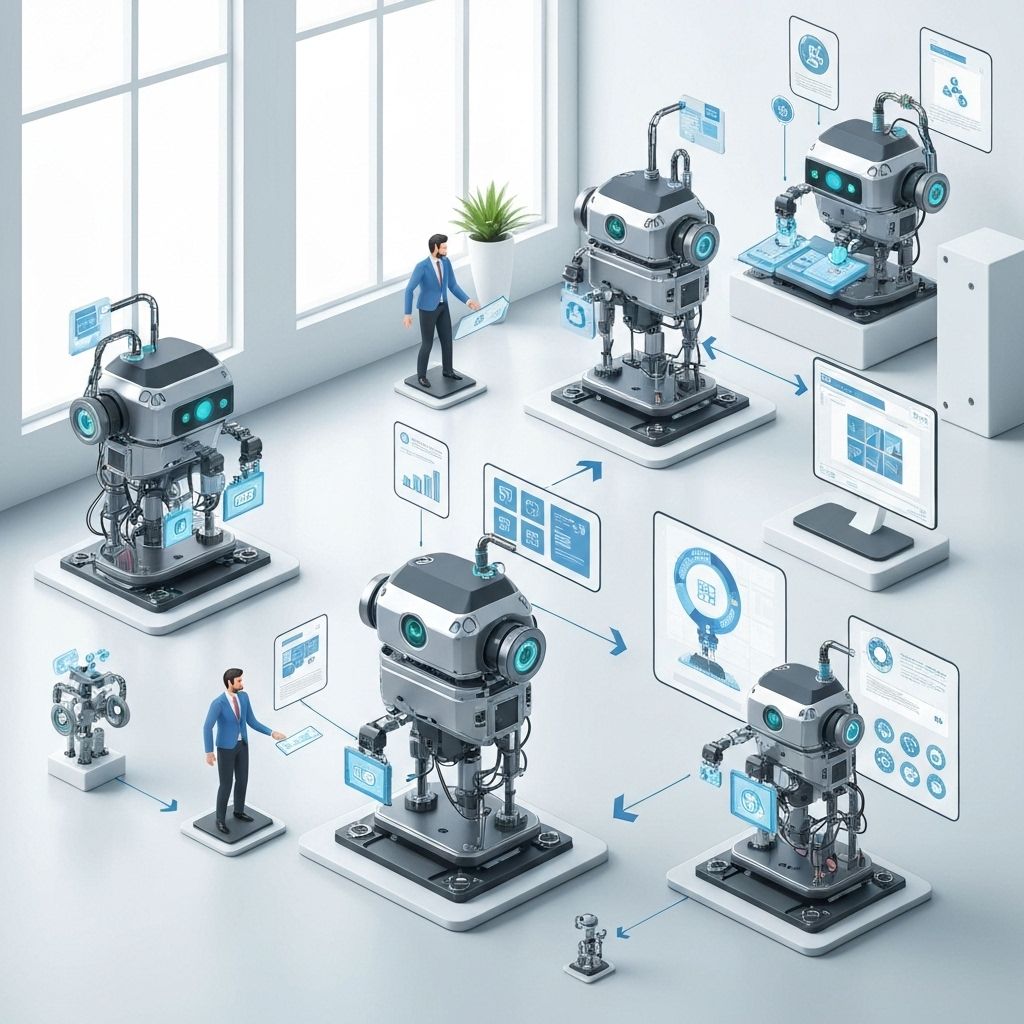How IT Automation Creates Competitive Advantage
Explore how automating routine IT tasks can free up your team to focus on strategic initiatives while reducing errors and improving efficiency.
Automation Specialist
Process Automation Expert

In today's fast-paced business environment, organizations that can execute faster, more accurately, and with greater consistency gain significant competitive advantages. IT automation has emerged as a critical enabler of this competitive edge, transforming how businesses operate and deliver value to their customers.
The Power of Automated Efficiency
Manual IT processes are not only time-consuming but also prone to human error. When routine tasks like server provisioning, software deployments, and system monitoring are automated, organizations see immediate improvements in both speed and accuracy.
Consider the impact: tasks that once took hours or days can be completed in minutes, with consistent results every time. This efficiency gain allows IT teams to handle larger workloads without proportional increases in staff, directly impacting the bottom line.
Automation Impact Areas
- Infrastructure Management: Automated provisioning, scaling, and maintenance of servers and cloud resources
- Security Operations: Automated threat detection, response, and compliance monitoring
- Application Deployment: Continuous integration and deployment pipelines
- Data Management: Automated backup, recovery, and data processing workflows
Strategic Focus Through Automation
Perhaps the greatest benefit of IT automation is how it transforms the role of IT professionals. Instead of spending time on repetitive, manual tasks, skilled technicians can focus on strategic initiatives that drive business growth and innovation.
This shift from reactive maintenance to proactive strategy enables IT departments to become true business partners. They can spend more time understanding business requirements, designing solutions, and implementing technologies that create competitive advantages.
Consistency and Reliability
Automated processes deliver consistent results every time they run. This reliability is crucial for maintaining system stability, meeting service level agreements, and ensuring customer satisfaction. When processes are automated, organizations can predict outcomes with confidence and plan accordingly.
Consistency also extends to compliance and governance. Automated processes can be designed to follow regulatory requirements and internal policies precisely, reducing the risk of compliance violations and associated penalties.
Scalability Without Complexity
As businesses grow, manual processes become bottlenecks that limit scalability. Automated systems can handle increased workloads without proportional increases in complexity or resource requirements. This scalability is essential for businesses that experience rapid growth or seasonal fluctuations in demand.
Automation also enables organizations to maintain service quality as they scale. Whether serving 100 customers or 100,000, automated processes deliver the same level of service consistency and reliability.
Building Your Automation Strategy
Successful automation requires a strategic approach that identifies the right processes to automate and implements them in the correct order. Start with high-volume, repetitive tasks that have clear, defined steps. These provide the quickest return on investment and build confidence in automation capabilities.
As your automation maturity grows, you can tackle more complex processes and integrate multiple automated systems to create comprehensive workflows. The key is to start small, measure results, and continuously improve your automation capabilities.
Remember, automation is not about replacing people—it's about empowering them to do more valuable work. When implemented thoughtfully, IT automation creates opportunities for professional growth while delivering measurable business benefits that drive competitive advantage.
